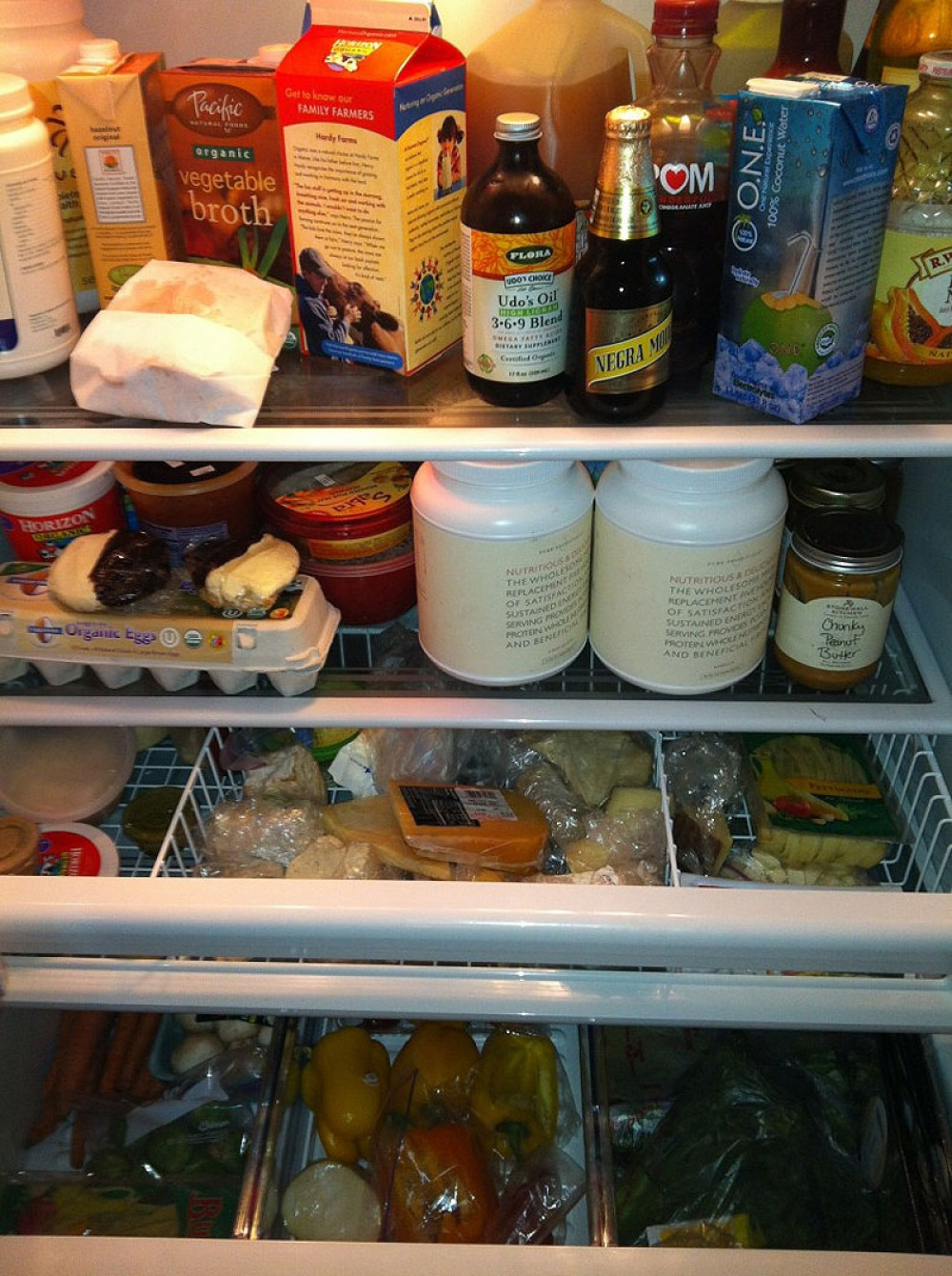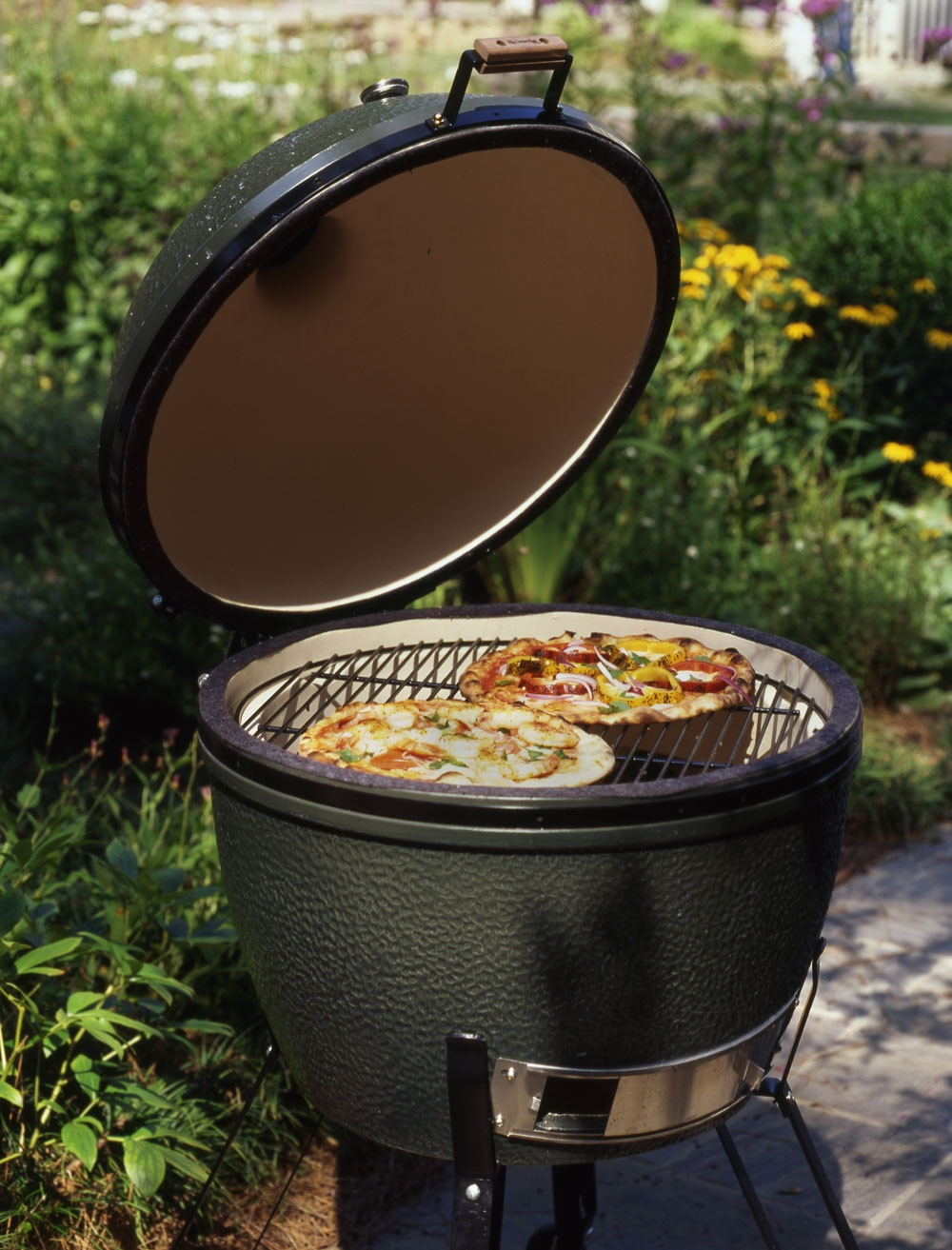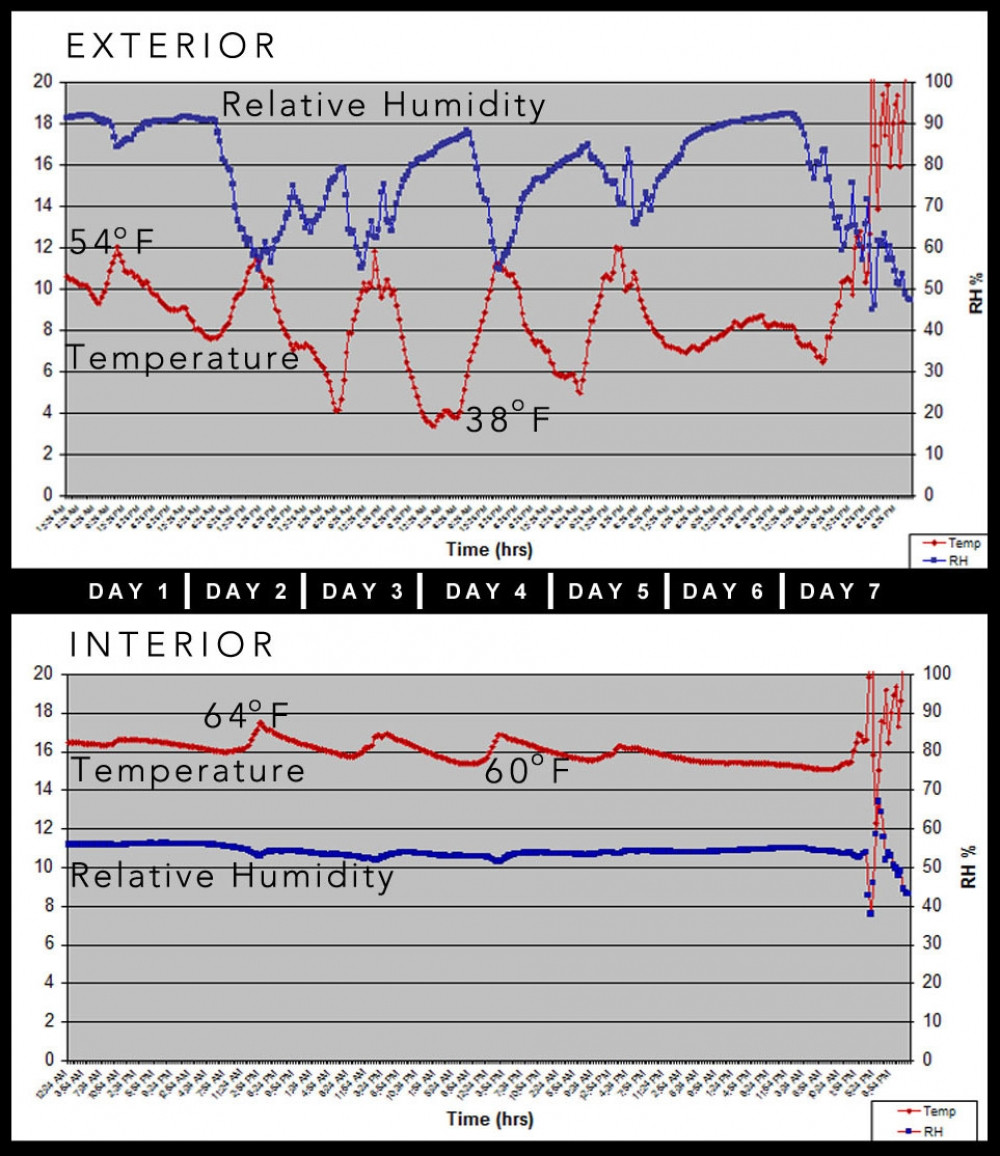To design and build structures that are thermally comfortable but effectively minimize energy use, it seems clear that some form of thermal mass should be part of the equation in most climates. Thermal mass acts like a 'thermal battery', storing heat energy. It stabilizes internal temperature, absorbing heat energy when the mass is cooler than ambient conditions and radiating it when the mass is warmer than ambient conditions.
"Thermal mass acts like a heating or cooling battery, that charges and discharges very evenly and gradually. It happens naturally, with no moving parts. Nothing to maintain. Ever."
We don't actually heat and cool most buildings designed and constructed today. For the most part, we can't; they have little real capacity to retain thermal energy. So instead, we heat and cool the air inside them; when there is a temperature difference between outdoors and what we want to live with inside, we either burn polluting combustible material for heat (coal, oil, wood, etc.) or we use mechanized heating (or cooling) systems to control the interior climate. Those machines cost a lot of money to design, build, install, operate, and maintain, and of course they use lots of energy and also contribute substantially to our pollution and waste stream. Presently, we invest over a third of the construction cost of many buildings in these systems. In the U.S., we spend almost forty percent of our national energy consumption feeding them, paying a considerable economic, environmental, and geopolitical price. If there is an interruption in our power supply, or if we simply cannot afford the equipment or the power bills, we're just out of luck. Although this state of affairs represents the generally accepted standard, it really would not seem to make much sense. We have come to accept these practices as a normative and necessary aspect of modern architecture and life.
Yet there are better options, including heating or cooling the building itself rather than the air in the building. One very straightforward option is use the simple but often overlooked design principle of thermal mass.

A typical 'modern' building is in many ways similar to a common refrigerator that is mostly empty. It encloses a moderately insulated volume of space, thermally conditioned by a machine (heat pump compressor) activated and deactivated by a thermostat. Heat flows in or out via conductive energy transfer, so the compressor constantly cycles off and on. Open the door, and it has to go right back to work restoring the desired temperature.
If we design and build architecture with interior thermal mass, we instead create something more like a refrigerator that is mostly full. Few people realize the energy ratings advertised on refrigerators never reflect how they will actually perform - until they are loaded with lots of liquids in various forms.
Once the refrigerator is storing enough items with substantial thermal mass, opening the door will have very little impact on the interior temperature. The chilled thermal mass will keep the internal temperature stable, and the cooling system will be working not to maintain the air temperature inside, but rather, the contents inside - which it will do with relative ease, because the thermal energy flows will be moving so gradually.
So, keep lots of fluilds in your refrigerator!

Japanese style ceramic barbecues (such as Big Green Egg) differ dramatically from mainstream offerings that may have a similar form (such as Weber), in one crucial way: They have a very heavy ceramic body with abundant thermal mass. Rather than relying on the radiant heat of the fire and heated air, the barbecue enclosure absorbs heat energy and cooks with captured radiant energy. A very small fire burning relatively removed from the food drives the whole system with astonishing efficiency. The difference in the cooking performance and results is far from subtle.
The principle of thermal mass is active everywhere around us, and it is easy to recognize once you are aware of it. Thermal mass acts like a heating or cooling battery, that charges and discharges very evenly and gradually. It happens naturally, with no moving parts. Nothing to maintain. Ever.
Throughout the history of architecture, the proportion of funding devoted to the basic structure of buildings has historically hovered at roughly eighty percent; today, it is less than twenty percent. That we routinely spend more on mechanical systems dedicated to internal temperature control than on any other single item - in many cases, substantially more than the 'bones' of the actual structure - reveals the value we assign to environmental control.
Designing and building with systems such as SIREWALL - engineered sandstone walls that have tons of thermal mass on both sides of a core of insulation - rolls this shift in priorities back in a wholly win-win way. Funding for the creation, operation, and maintenance of mechanical systems can be slashed in favor of dramatically enhanced architectural character and comfort.

During the week in question, the outside temperature never got above 12 degrees Celsius (54 degrees Fahrenheit) and dropped at night to below 4 degrees Celsius (38 degrees Fahrenheit). Yet the interior temperature remained steady, right at 60 to 64 degrees Fahrenheit. The contrast between the wild variations of relative humidity outside and steady levels inside was just as dramatic. [1]
(I am often asked what is going on with the wild variations on the last day of the study. That is what the data loggers experienced on the car and ferry ride back to the BCIT lab on the mainland. Whee!)
When I first saw this data, I was astounded. The building was absorbing heat during the day from the radiant energy of the sun. After an entire month of being unoccupied, where the dominant weather pattern had been typical for the location in the winter - overcast sky with wind and rain - the home was holding steady at an ideal interior temperature without drawing a single watt of power. This has equally profound implications for designers dealing with situations where humidity needs to be controlled as well as temperature. Humidity control, achieved 'actively' with mechanical equipment, is expensive to install and to operate. Here, it is all happening without a single moving part.
[1] It is important to note that a radiant heating contractor will set a radiant floor to about 62 degrees Fahrenheit to achieve what most people feel is an ideal temperature; they do not set the temperature to, say, 68 or 70 degrees, because that would be way too warm. We experience radiant heat very differently.
